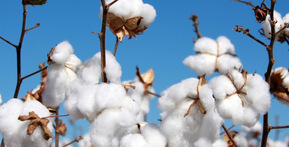The genetic engineering of plants and animals is becoming one of the most highly contentious scientific issues of the 21st century. With the question of whether to label the food that has been genetically modified already on the ballot in California, genetically modified organisms (GMOs) are shaping the future of the food and agriculture industry. On the surface GMOs may seem to be very helpful, as they might allow for increased food production along with a more nutritious and resilient crop, but there are many uncertainties surrounding GMOs that must be addressed. GMOs pose a serious risk to the health of humans and other organisms along with long-term ecological consequences, such as the emergence of bacteria-resistant pests.

The health risks of consuming genetically modified foods is one of the most important unknowns surrounding GMOs. And, as research progresses, more and more alarming results are being seen. A recent study carried out by a team of French scientists found rats fed on a diet consisting of genetically modified corn produced by Monsanto suffered severe health complications such as tumors, kidney and liver damage. According to researchers, "Fifty percent of male and 70 percent of female rats died prematurely, compared with only 30 percent and 20 percent in the control group," ("RT"). This and other research strengthens the argument that GM crops may have serious negative health effects on animals and possibly humans. While it cannot be concluded from one study that GMOs are the cause of negative health effects, there is a great concern about the long term impact of GM foods on animal and human health based on such conclusions.

Not only do GMOs present grave health concerns to animals and humans, the ecological impact of them is beginning to come into clearer focus. With the influx of GMO use in the agriculture industry, a new concern has developed, the evolution of bacteria-resistant pests. A prime example of this issue involves Monsanto, the world's largest seed producing company. Monsanto created a new kind of cotton seed called Bollgard that secrets a toxin that stops the deadly bollworm from wreaking havoc on the cotton plant. With enormous popularity, this GM cotton became very useful for farmers around the world, especially in India. Yet, as of recent, problems are starting to arise with this 'super-cotton': "It seems that Monsanto has 'detected unusual survival' in the pink bollworms munching down on their Bollgard cotton. In other words India's cotton-crunching bollworms are becoming resistant to the toxin-secreting Bollgard" (Chameides). While Monsanto is out developing Bollgard II to combat this issue, the main problem is not going to go away, pests will continually evolve to resist the genetic engineering of the plants. With an increased reliance on GMOs in the agricultural industry, more scrutiny is needed to prevent the influx of these super-pests which could threaten the existence of the agricultural industry in the future.
Society has already determined that, in the future, a greater number of people will be in need of nutritious food, crop yield will be strained, and environmental resources will be at risk. While GMOs provide an interesting and promising route to solving some of these dire issues, a step back must be taken to assess the overall potential long term consequences of GMO use. Animal and human health is of top priority to food safety experts around the world, and without adequate research on the long-term impacts of GMOs, it cannot be said these foods that are genetically modified are safe to eat. With studies beginning to point out the negative health effects of GMOs in animals, measures need to be in place to look at GMO use before it takes over the agriculture industry. Aside from health impacts, from an ecological standpoint GMOs are creating bacteria resistant pests that have the potential to threaten the future of the agriculture industry. The positives and negatives must be more thoroughly researched, however, the negatives that are presented in current research may be enough to deter future use of GMOs.
Society has already determined that, in the future, a greater number of people will be in need of nutritious food, crop yield will be strained, and environmental resources will be at risk. While GMOs provide an interesting and promising route to solving some of these dire issues, a step back must be taken to assess the overall potential long term consequences of GMO use. Animal and human health is of top priority to food safety experts around the world, and without adequate research on the long-term impacts of GMOs, it cannot be said these foods that are genetically modified are safe to eat. With studies beginning to point out the negative health effects of GMOs in animals, measures need to be in place to look at GMO use before it takes over the agriculture industry. Aside from health impacts, from an ecological standpoint GMOs are creating bacteria resistant pests that have the potential to threaten the future of the agriculture industry. The positives and negatives must be more thoroughly researched, however, the negatives that are presented in current research may be enough to deter future use of GMOs.
Bibliography
Chameides, Bill. "Update: Resistance Bites Again."Scientific American. 23 March 2010: n. page. Web. 5 Nov. 2012.
"Revealed: Monsanto GM corn caused tumors in rats." RT. 20 September 2012: n. page. Web. 5 Nov. 2012.
Chameides, Bill. "Update: Resistance Bites Again."Scientific American. 23 March 2010: n. page. Web. 5 Nov. 2012.
"Revealed: Monsanto GM corn caused tumors in rats." RT. 20 September 2012: n. page. Web. 5 Nov. 2012.
 RSS Feed
RSS Feed